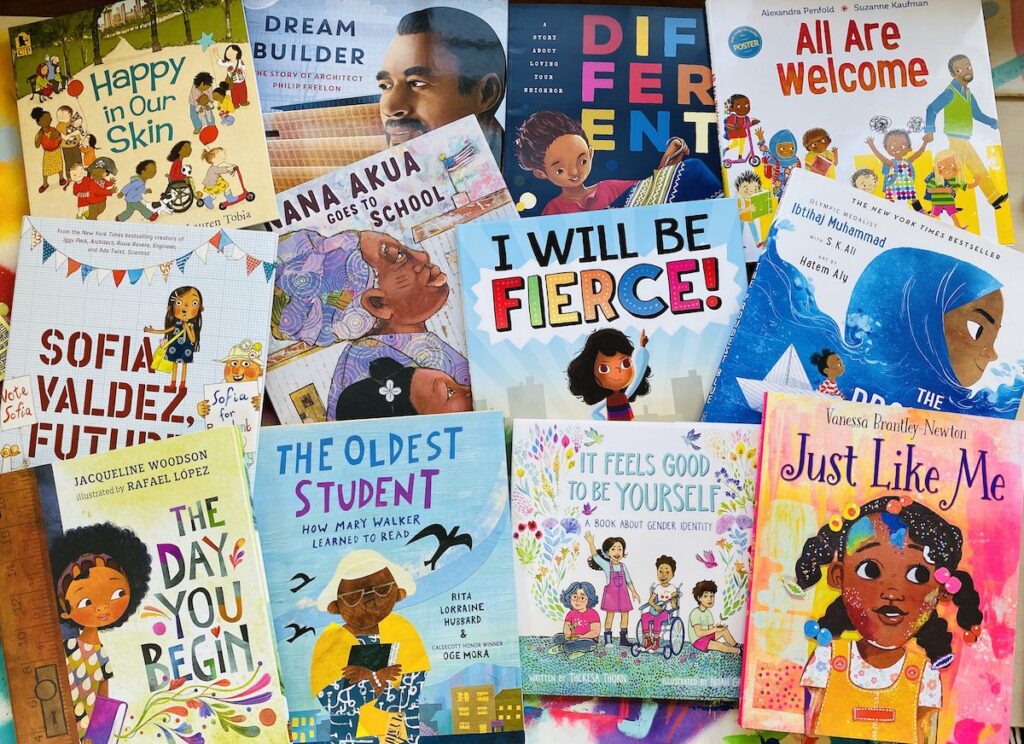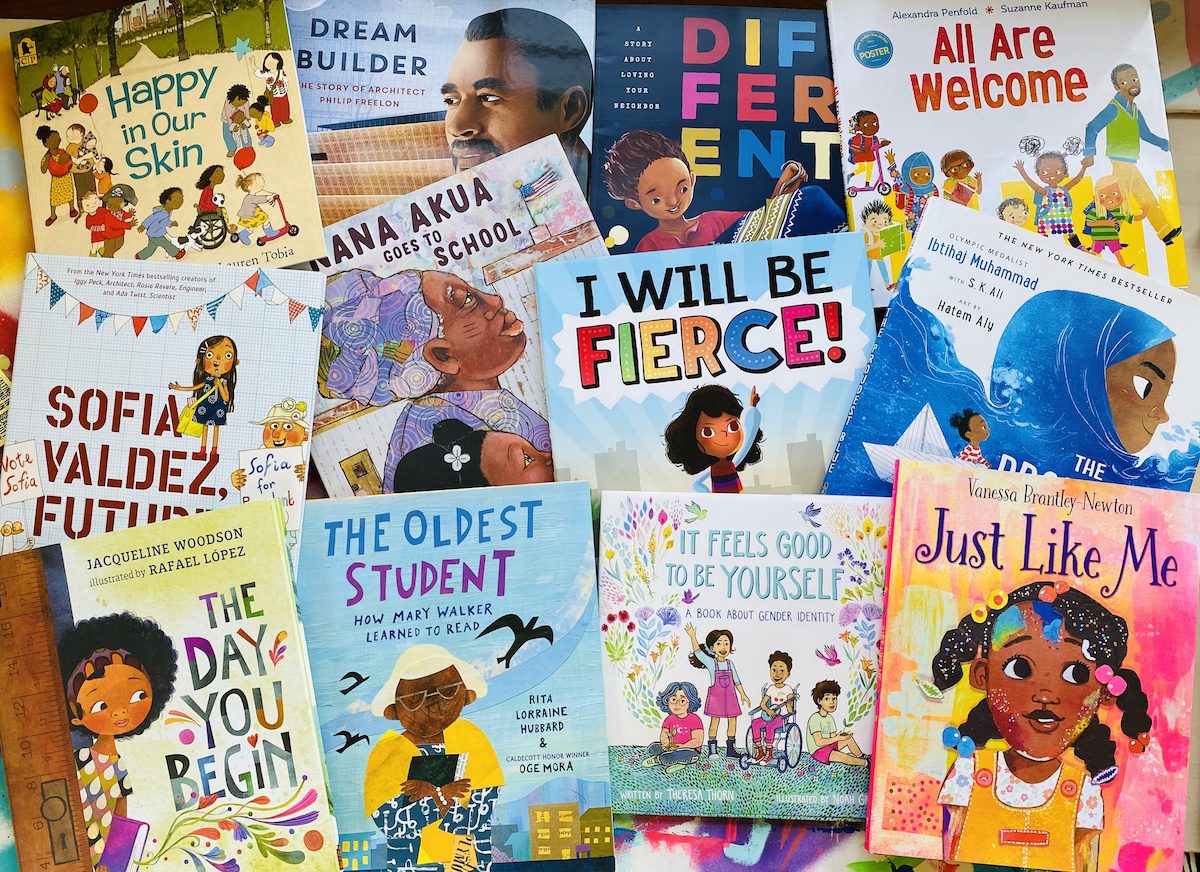
Celebrating Uniqueness: Inspiring Children’s Books About Being Different
In a world that often emphasizes conformity, it’s crucial to nurture a child’s understanding and acceptance of individuality. Children’s books about being different play a vital role in fostering empathy, self-esteem, and a broader perspective on diversity. These stories provide a safe space for children to explore their own unique qualities and appreciate those of others. This article delves into some of the most impactful children’s books that celebrate being different, highlighting their themes, messages, and the positive impact they can have on young readers. We will explore a range of narratives, from tales of physical differences to stories embracing neurodiversity and cultural uniqueness. The goal is to equip parents, educators, and caregivers with resources to promote inclusivity and understanding in their children’s lives. These children’s books about being different aren’t just stories; they’re tools for building a more compassionate and accepting world. These books help children understand that being different is not a weakness but a strength, a source of creativity, and a reason to celebrate.
The Importance of Representation in Children’s Literature
Children’s literature serves as a mirror, reflecting the world back to young readers, and a window, offering glimpses into lives and experiences different from their own. When children see themselves represented in books, it validates their existence and fosters a sense of belonging. Conversely, exposure to diverse characters and stories broadens their understanding of the world and cultivates empathy. Children’s books about being different are particularly important because they challenge societal norms and stereotypes, promoting a more inclusive and accepting worldview. They help children understand that there is no single “normal” and that differences should be celebrated, not feared. It’s essential to select books that authentically represent diverse experiences, avoiding stereotypes or tokenism. The power of representation cannot be overstated; it shapes children’s perceptions of themselves and others, influencing their attitudes and behaviors throughout their lives.
Exploring Themes of Physical Differences
Many children’s books about being different focus on physical attributes that set characters apart. These stories often address issues of self-esteem, acceptance, and overcoming challenges. One notable example is “Wonder” by R.J. Palacio (though technically a middle-grade novel, its message resonates with younger readers), which tells the story of August Pullman, a boy with facial differences entering mainstream school for the first time. The book beautifully illustrates the importance of kindness, acceptance, and looking beyond appearances. Other stories explore differences in skin color, disabilities, and other physical characteristics, teaching children to appreciate the beauty of diversity and to treat everyone with respect. These narratives often highlight the inner strengths and talents of characters who may initially be judged based on their appearance. By showcasing characters who embrace their differences and overcome obstacles, these books empower children to do the same.
Examples of Books Addressing Physical Differences
- “Wonder” by R.J. Palacio: A powerful story about acceptance and kindness.
- “The Skin You Live In” by Michael Tyler: Celebrates the beauty of different skin colors.
- “Susan Laughs” by Jeanne Willis: Shows a child with Down syndrome enjoying everyday activities.
Embracing Neurodiversity Through Children’s Books
Neurodiversity refers to the natural variation in human brain function and behavioral traits. Children’s books about being different are increasingly addressing neurodiversity, including autism, ADHD, dyslexia, and other conditions. These stories help children understand and appreciate different ways of thinking, learning, and experiencing the world. They often feature characters with neurodevelopmental differences who possess unique talents and perspectives. By showcasing these characters in a positive light, these books challenge stigma and promote acceptance. They also provide valuable insights for children who may be experiencing similar challenges, helping them feel understood and validated. Furthermore, these books can educate neurotypical children about the strengths and challenges of their neurodivergent peers, fostering empathy and creating a more inclusive classroom environment.
Notable Books Featuring Neurodivergent Characters
- “All My Stripes: A Story for Children with Autism” by Shaina Rudolph and Danielle Royer: A gentle story about a boy with autism who learns to embrace all aspects of himself.
- “Percy Jackson and the Olympians” by Rick Riordan: Features a dyslexic and ADHD protagonist who uses his differences to his advantage.
- “Ellie, Engineer” by Jackson Pearce: Showcases a creative and resourceful girl with ADHD.
Celebrating Cultural and Ethnic Diversity
Cultural and ethnic diversity enriches our world, and children’s books about being different play a crucial role in celebrating these differences. These stories introduce children to various traditions, customs, and perspectives, fostering cross-cultural understanding and empathy. They often explore themes of immigration, identity, and belonging, helping children appreciate the richness of human experience. By reading about characters from different backgrounds, children can learn to challenge stereotypes and develop a more nuanced understanding of the world. It is important to select books that authentically represent diverse cultures, avoiding cultural appropriation or misrepresentation. These narratives can also help children from marginalized communities feel seen and valued, reinforcing their sense of identity and belonging. Promoting cultural and ethnic diversity through literature is essential for creating a more inclusive and equitable society.
Examples of Books Celebrating Cultural Diversity
- “The Name Jar” by Yangsook Choi: A story about a Korean-American girl who learns to embrace her name and heritage.
- “Abuela” by Arthur Dorros: Celebrates the relationship between a child and their grandmother while introducing Spanish words and culture.
- “Last Stop on Market Street” by Matt de la Peña: Showcases a diverse urban community and the beauty of everyday life.
Addressing Social and Emotional Differences
Not all differences are visible. Many children’s books about being different address social and emotional differences, such as shyness, anxiety, or different ways of expressing emotions. These stories help children understand that it’s okay to feel different and that everyone has their own unique way of navigating the world. They often provide strategies for coping with challenging emotions and building self-confidence. By reading about characters who struggle with similar issues, children can feel less alone and more empowered to seek help when needed. These books can also help children develop empathy for their peers who may be struggling with social or emotional challenges, fostering a more supportive and understanding classroom environment. Addressing these often-invisible differences is just as important as celebrating physical and cultural diversity.
Books That Explore Social and Emotional Differences
- “The Invisible Boy” by Trudy Ludwig: A touching story about a shy boy who learns to find his voice.
- “Wilma Jean the Worry Machine” by Julia Cook: Provides strategies for managing anxiety.
- “My Many Colored Days” by Dr. Seuss: Explores the different emotions we experience and how they can change from day to day.
How to Use These Books in Educational Settings
Children’s books about being different are valuable resources for educators looking to promote inclusivity and understanding in the classroom. These books can be used as springboards for discussions about diversity, empathy, and respect. Teachers can facilitate activities such as read-alouds, group discussions, and creative writing exercises to help students explore these themes. It is important to create a safe and supportive classroom environment where students feel comfortable sharing their own experiences and perspectives. Teachers should also be mindful of selecting books that accurately and respectfully represent diverse cultures and experiences. By incorporating these books into the curriculum, educators can help students develop a deeper understanding of themselves and others, fostering a more inclusive and compassionate learning environment. [See also: Creating an Inclusive Classroom Environment]. Furthermore, these books can be used to address bullying and promote kindness, helping students understand the impact of their words and actions.
Tips for Parents: Choosing the Right Books
Parents play a crucial role in shaping their children’s attitudes towards diversity and inclusion. When selecting children’s books about being different, it is important to consider the following tips: Look for books that authentically represent diverse cultures and experiences. Avoid books that perpetuate stereotypes or promote harmful narratives. Read reviews and seek recommendations from trusted sources. Consider your child’s age and developmental level when choosing books. Engage in conversations with your child about the themes and messages in the books. Encourage your child to ask questions and share their own perspectives. By carefully selecting and discussing these books, parents can help their children develop a deeper understanding and appreciation of diversity. Remember, the goal is not just to expose children to different cultures and experiences but to foster empathy, respect, and a genuine appreciation for human diversity. These children’s books about being different will help promote healthy discussions and build empathy.
The Long-Term Impact of Reading Diverse Books
The benefits of reading children’s books about being different extend far beyond childhood. Exposure to diverse stories and perspectives can shape children’s attitudes and behaviors throughout their lives. Children who grow up reading these books are more likely to be empathetic, tolerant, and open-minded. They are also more likely to challenge stereotypes and advocate for social justice. By fostering a love of reading and a commitment to diversity, parents and educators can help create a generation of compassionate and engaged citizens. These books are not just about entertainment; they are about building a better future for all. The long-term impact of reading diverse books cannot be underestimated; it is an investment in a more inclusive and equitable world. [See also: The Importance of Diversity in Education]. These children’s books about being different help to foster that sense of inclusion and empathy.
Conclusion: Celebrating Our Differences
In conclusion, children’s books about being different are essential tools for fostering empathy, understanding, and acceptance. These stories help children appreciate the beauty of diversity and challenge societal norms and stereotypes. By providing representation for marginalized communities and celebrating unique qualities, these books empower children to embrace their own individuality and respect the differences of others. Whether addressing physical differences, neurodiversity, cultural diversity, or social-emotional challenges, these narratives offer valuable lessons for young readers. Parents and educators can use these books to create a more inclusive and compassionate world, one story at a time. The power of literature to shape young minds is undeniable, and by choosing books that celebrate diversity, we can help children grow into empathetic, understanding, and accepting individuals. Ultimately, these children’s books about being different are about celebrating what makes each of us unique and fostering a world where everyone feels valued and respected. These books help children appreciate that being different is a good thing and that it is something to celebrate.

